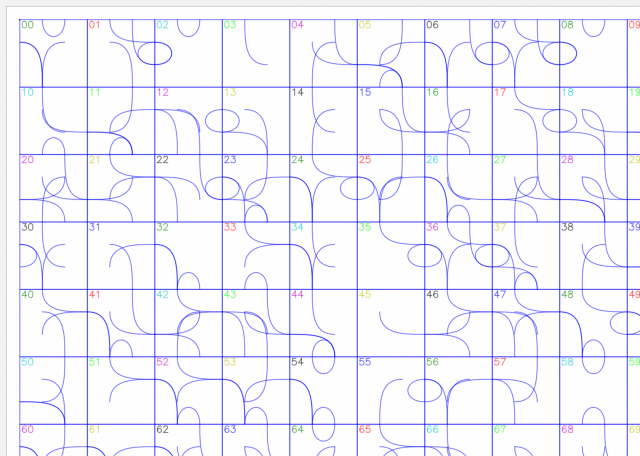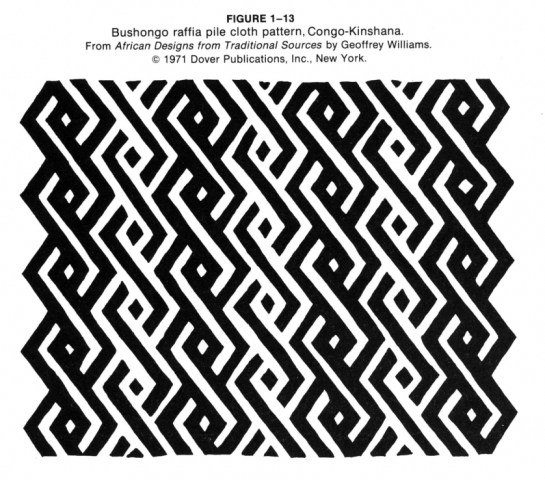Computed art lends itself to elegance in pattern. I liked how the 10 print passage had a ton of examples of old 1-line code bits that produced serendipitous arrangements of lines and blocks, and I tried to write code for this project that would surprise me similarly. For example, I had no idea the leaf-like structures in my piece would arise, but they did, and that was a lovely discovery.

